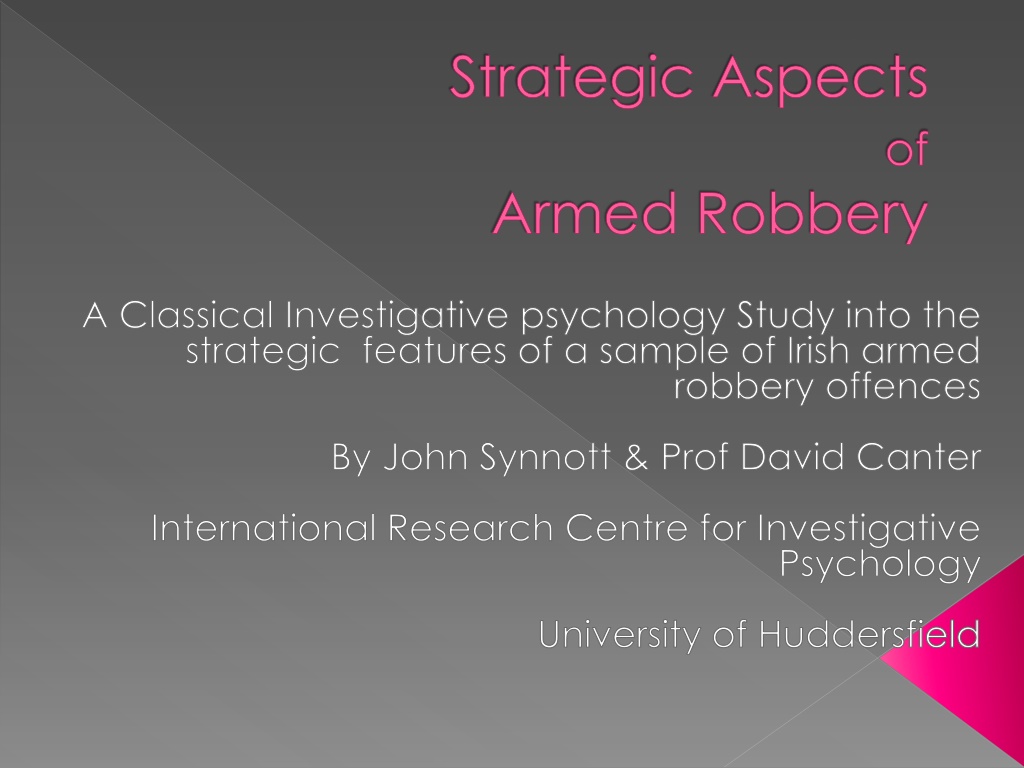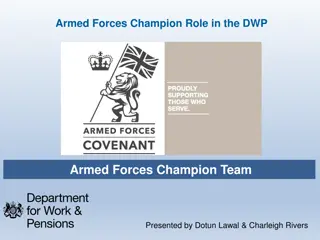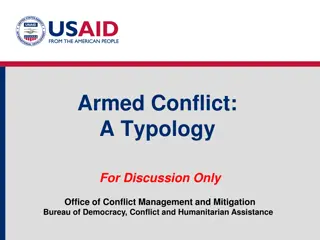
Armed Robbery: Investigative Insights and Strategic Features
Explore the strategic aspects of armed robbery through a classical investigative psychology study, analyzing the necessary features for completing the offense, the level of organization involved, victim interaction, and more. Discover key findings from studies on variations in robbery behavior, levels of planning, impulsivity, and group dynamics. Uncover distinctions in offender styles based on interactions with victims and the importance of planning, organization, and victim interaction in defining professional robbery.
Download Presentation

Please find below an Image/Link to download the presentation.
The content on the website is provided AS IS for your information and personal use only. It may not be sold, licensed, or shared on other websites without obtaining consent from the author. Download presentation by click this link. If you encounter any issues during the download, it is possible that the publisher has removed the file from their server.
E N D
Presentation Transcript
Strategic Aspects of Armed Robbery A Classical Investigative psychology Study into the strategic features of a sample of Irish armed robbery offences By John Synnott & Prof David Canter International Research Centre for Investigative Psychology University of Huddersfield
Strategic Aspects of Armed Robbery Strategic aspects are the necessary or required features of the offence that are, a) vital for the completion of the event, b) essential for undertaking the crime, or, c) as a result of having carried out the offence. Strategic Aspect are considered a greater indication of... level of organisation involved level of demands placed on the offender difference between robberies -> greater within crime focus
Fundamental Developments Feeney (1986) Number of individual differences between robberies Alison et al (2000) variation in robbery behaviour as a manifestation of self adopted roles The degree of planning Levels of impulsivity Porter and Alison (2006a) dynamics and hierarchical structure of group robberies. leaders identified in majority of robberies ->103 out of 105 cases. Porter and Alison (2006b) interpersonal themes between commercial and personal robbery Commercial robberies greater level of cooperation, whereas personal robberies higher levels of hostility
Victim Interaction What distinguishes an offense is not distinct sophistication or professionalism but the preparedness to interact directly with the victim. Support found for this through the work of Alison et al and then Canter and Youngs who have shown that styles of offending can be distilled from crime scene behaviour indicated primarily through an offenders interaction with the victim. Current study aimed to explore whether these distinctions can be found in the strategic aspects of the offence and also how they presented.
Classic Investigative Psychology Study The nature of the variations between a sample of armed robbery offences. Central to distinguishing between offence Planning Relative Organisation, and Victim Interaction The importance of a more specific within crime focus The general ideas that the current study sought to explore was that professional robbery can be defined in terms of planning, advanced organisation and victim interaction that can be drawn out through the strategic features of the offence
Sample and Method 22 cases of Irish Armed Robbery collected with the assistance of An Garda Criteria for selection was Elements of being highly organised Amount stolen Presence of a Weapon (Gun) Use of a Getaway Vehicle Interview with convicted armed offender (Seamus) Data Coding process straight forward present/not present. Distance: route distance over crow flight distance. Multidimensional Scaling procedure - Smallest Space Analysis
Full list of variables with frequencies in brackets 1.Crime Occurred in an Urban location (13) 12. The vehicle was disposed within 5km of the robbery location (15) 13. A financial institute or an associated type was robbed (ATM Cash included) (14) 14. The crime occurred during the day time between 6am and 6pm (15) 15. The Robbery was carried out on a weekday (18) 16. More than 20K was reported stolen (12) 17. A Get-away driver was reported (13) 18. There was evidence of prior planning from offence (19) 19. Levels of Forensic apparent (14) 20. The getaway vehicle was burnt out after robbery (7) 21. There was hostages taken during the offence (8) 22. The vehicle was disposed in a residential area (11) 2. Three or more offenders were involved in the crime (16) in Transit Van 3. A bat was carried during the offence (6) 4. A knife was carried during the offence (3) 5. A Gun was carried during the offence (20) 6. A Motor Bike was used in the crime (2) 7. A four wheeled vehicle was used during the crime (Van, Jeep or Car etc) (18) 8. The victims car was hijacked (4) awareness was 9. Two or more Vehicles were reported as being used during the crime (18) 10. The offenders wore disguises (16) 11. There was reports of violence used during the crime (11)
Results Features of Armed Robbery 3 or more offenders (73%), use of weapons (100%), multiple vehicles (81%), evidence of planning (86%) taking of hostages (36%) Preliminary viewing suggest it is a subset of a larger range of crimes Three board styles of offending where identified they were the, Interactive Offence Offence Dependent Classical Offence
Dominant Mode The core features of the offence which are those features that define what is under investigation, for example, Two or more vehicles used Presence of a weapon (Gun) Four wheeled vehicle used Expressions in the radial facet Levels of planning Offence during the week Getaway driver Forensic Awareness Three or more offenders
Interactive Offence Deliberate interaction not potential interaction on behalf of the offender, Co-occurring with Hostage taking is Presence of Violence (J=.68) Taking victims vehicle (J=.64) Burning of the vehicle (J=.68) This region it is argued is portraying the Tiger Kidnap style offence.
Classical Offence Considered conventional form of Armed Robbery A disguised attack on a financial institution during the day Key exploratory opportunities drawn out from CO Disposal location of getaways vehicles - Under 5km Urban in Location Residential in nature Significant implications for emergency response unit Seamus notes in relation to the disposal site and the getaway that, The aim is to spend as little time in the car as possible so it will be driven no longer than 1 mile from the robbery to the predetermined second location the disposal locations are always predetermined unless there is a problem such as we have been identified, though even then it may be beneficial to stick to the original plan of the location used as the routes are all planned and chosen for this reason.
Discussion The general pattern is that armed robbery is primarily about the strategic requirements specifically relating to levels of generic planning. The variation between offences reflects whether an offender chooses to directly involve a victim in their offence or whether they stick to what we have referred to as a classic armed robbery style offence. The current research supports previous research into Co Offending (Alder; 2009) Temporal Frequencies (Van Koppen and Jansen; 1999).
Developing our understanding of offence styles Importance of a greater within offence classification The same in name but not in nature difference between similar styles of offence Very real benefit of exploring strategic features Not just robbery but all crime types (rape, murder, fraud) Greater representation of those behind the offence (Re: planning stage) New way of understanding the offence (What are we dealing with )
Implications The findings have notable implications for, Understanding what it takes to plan an offence Importance of the Vehicle Getaway vehicle - disposal location/distance travelled Number of offender and their roles Temporal features of the offence Our understanding of the psychological processes behind Use and presence of violence Spatial strategy employed by offenders Hostage taking in robbery Investigative procedural advice for Response Units, Identifying distance ranges over which offenders travel Identifying types of locations offender dispose of the vehicles
THANK YOU FOR LISTENING John Synnott International research centre for investigative Psychology the university of Huddersfield

![READ⚡[PDF]✔ European Mail Armour: Ringed Battle Shirts from the Iron Age, Roman](/thumb/20552/read-pdf-european-mail-armour-ringed-battle-shirts-from-the-iron-age-roman.jpg)




















